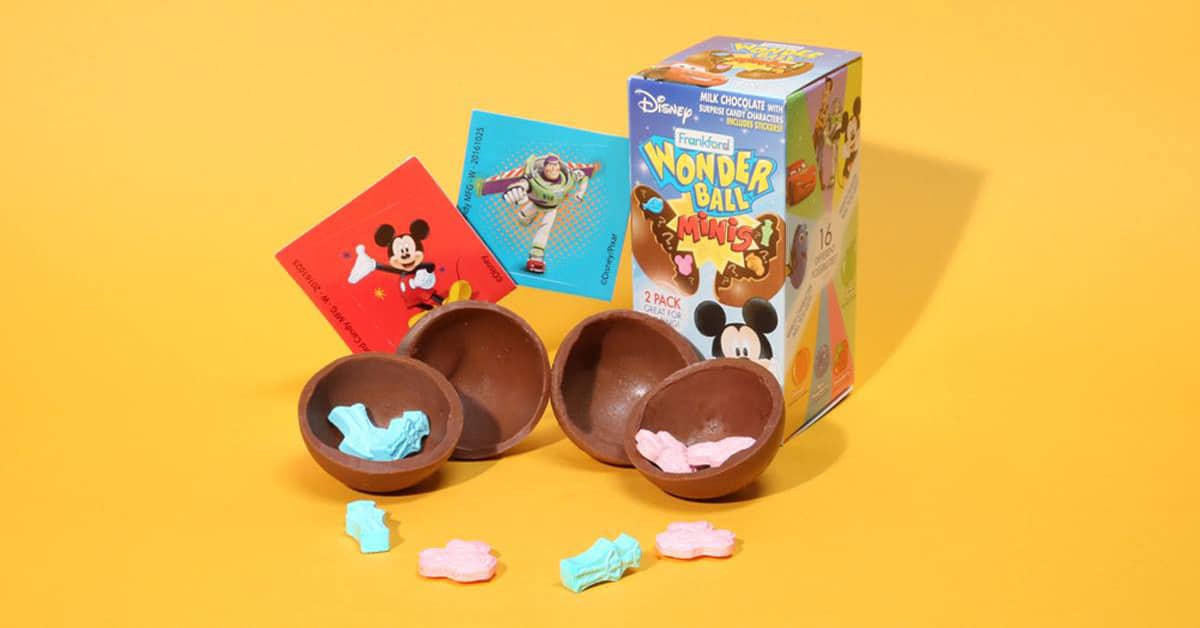Wonder Ball Chocolate
This creative and unique chocolate product was made by Nestle and introduced in the 1990s. Kids loved these candy balls that had surprises inside of them. Wonder Ball Chocolate was also associated with various partnerships, including cartoon characters and other entertainment franchises, that helped to make these candies relevant and exciting to kids of various ages.
Wonder Ball Chocolates went on and off the market in the years after they were introduced due to various complications related to popular opinion of them and production limitations. You might have missed trying out these sweet and exciting little treats due to the times when they were pulled from the shelves of stores all around the US. Sadly, the candies have been discontinued again and are not likely to come back to market anytime soon.
Please leave a review or any memories of this snack in the comments at the bottom of this page. Thank you!
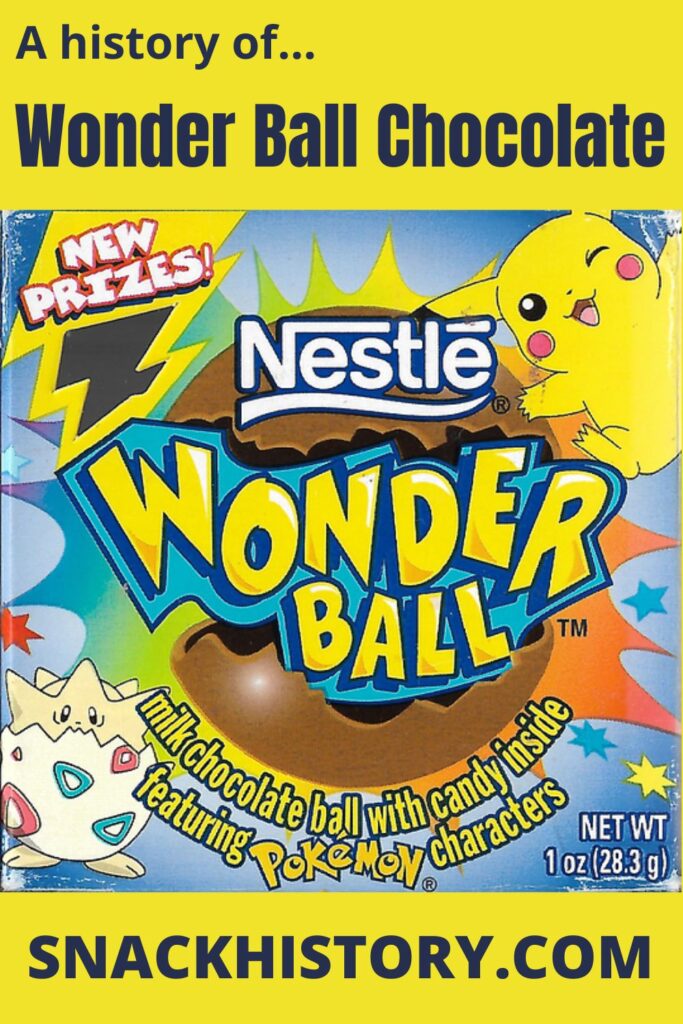
History
Nestle first sold Wonder Ball Chocolate in the mid-90s under the name Nestle Magic Ball. The original products contained small, plastic Disney character figures in the early years of its production. Nestle had intended to make a product that mimicked the Kinder Surprise, which was popular in Europe.
The Nestle Magic Ball was a simple product overall. There was a thin but hard outer shell of chocolate protecting the inner chocolate surprise. You could break the chocolate ball in half and see what was inside of the Magic Ball before eating it, or you could just dig into the chocolate ball and find out what the inside was like as you ate.
The company advertised these treats with the slogan, “What’s in the Wonder Ball?” Kids always love a surprise, and it was not hard to convince children that they wanted to get these chocolate candies and find out what kinds of toys were hidden inside of them. Nestle realized that kids would be more motivated to buy their Magic Ball products if they made the toys relevant, and they set up partnerships with brands like Cartoon Network, Disney, Pokémon, Care Bears, and SpongeBob SquarePants.
While kids really enjoyed the concept of a chocolate candy product with a surprise interior space that was filled with candies, adults and consumer protection groups were worried. Specifically, they were worried about children choking on the small toys or plastic figures that were inside each Magic Ball. All of the various concerned parties lobbied successfully to have the Magic Ball removed from the market, and in 1997, these candy treats were just a memory.
In April of 2000, Wonder Ball chocolates came back onto the candy scene, but the interior plastic toys had been replaced with small candies. The products were again marketed with the help of the same franchises, and Disney, Pokémon, and various other cartoon creators allowed Nestle to make candies in the shape of characters from their productions to place inside the Wonder Ball. There was no further reference to the earlier “Magic Ball” product name, and the product was always called the “Wonder Ball” after this second release.
However, despite the popularity of the Wonder Ball product that was choking-hazard-free, Nestle sold Wonder Balls to The Frankford Company in 2004. Frankford ultimately discontinued Wonder Balls without any comment about why they had done so. This proved the last hurrah for the product, and no one has seen or heard about them since.
For those who adored these candy treats with surprises inside of them, it has been very sad not to be able to get their hands on a Wonder Ball or a Magic Ball. There have not been many other candy items that can compete with the concept Nestle came up with, and perhaps the cost of making such a candy product is so prohibitive that only a very large candy company could afford to create such a treat. Certainly, the franchising costs associated with branding the treats inside the hard chocolate shell of a Wonder Ball would not be cheap.
Rumors always circulate, indicating that the Wonder Ball will be given a second chance at becoming popular with a new generation of candy lovers. However, The Frankford Company has not made any public statements or indications that this is the case, and they have not sold the products to another company in any kind of public sale.
This leaves the Kinder Surprise Egg as the only option for those who love candies that have something fun inside of them to discover as you eat. Nestle’s desire to create a competitor for the classic candy with a surprise inside didn’t pan out, but at least lovers of the candies filled with surprise treats concept have one remaining option to enjoy this kind of candy experience.
Fans of the Wonder Ball Chocolate have launched various crowdfunding opportunities and petitions to try and bring these candies back to the market without success. For those who are passionate about this candy product coming back to the shelves of stores all across the US, signing these petitions and joining these campaigns might be worth the time and effort. After all, there have been some other candy and snack products that have been reintroduced due to fan pressure on the maker, so why not Wonder Balls?
Varieties
The Wonder Ball enjoyed many different kinds of advertising connections over the years. SpongeBob was probably the most familiar of the various franchising partnerships that Nestle negotiated in relation to these candy snacks, but Disney also offered various different versions of their characters to Nestle for inclusion in Wonder Ball products. After The Frankford Company took over, two packs of Wonder Balls became common, and they also came out with Wonder Ball Minis as well. Both of these variations came with fruit-flavored candies in the center despite being miniature.
Cartoon Network was a later addition to the franchising agenda related to Wonder Ball candies, but there were a vast array of characters that could be added to the marketing materials and the centers of each Wonder Ball Chocolate when working with this kind of kid-friendly branding opportunity. Since plastic toys were no longer allowed to be in the Wonder Ball after concerns related to choking, the new center snacks were candies that usually were fruit-flavored and stamped in the shapes of the characters.
Those who loved Wonder Balls knew that the chocolate shell of all of the various products was the same. It was not flavored with anything, no matter which franchising partner was involved with the variety of Wonder Ball that someone gave you or that you picked up for yourself. The wrappers and the boxes of the Wonder Ball would indicate which kind of treats you would find inside your Wonder Ball of choice, however.
This is likely one of the main reasons that a smaller candy company cannot afford to make the Wonder Ball product. The cost to create boxes, wrappers, and other marketing materials for the various unique cartoon franchises would be prohibitive without significant access to funds. Even though the actual chocolate part of the Wonder Ball is quite simple, the interior treats were flavored in many cases and had to be pressed into different shapes to match the marketing of the particular Wonder Ball product being made.
The delightful zaniness of this kind of chocolate product was enticing just by itself, and adding recognizable and kid-friendly characters to a basic chocolate product was genius. People would talk about the different kinds of Wonder Balls as if they had unique flavors or offered some kind of perk compared to other Wonder Balls, but really the only difference was the packaging and the treats inside each candy ball’s shell.
The Frankford Company did introduce a fun Wonderball variety that was linked with the Super Mario franchise. There were two candy balls inside each box, and stickers and other kinds of fun games were included with the candies. This was a big hit for kids who loved playing video games, and the included stickers and other items were a big draw for kids of all ages. The Super Mario-shaped treats inside were flavored with Blue Raspberry and Cherry and pressed into familiar Super Mario Shapes.
There is no question that there is an immense sense of fun involved in opening a boxed chocolate and seeing a foil wrapper that indicates which cartoon characters are tucked inside the candy shell you are holding. It is too bad that the expense of this kind of candy creation is so limiting. Nearly everyone who loves candies loves products with a sense of whimsy and fun, and Wonder Balls offered these things in spades.
Logo
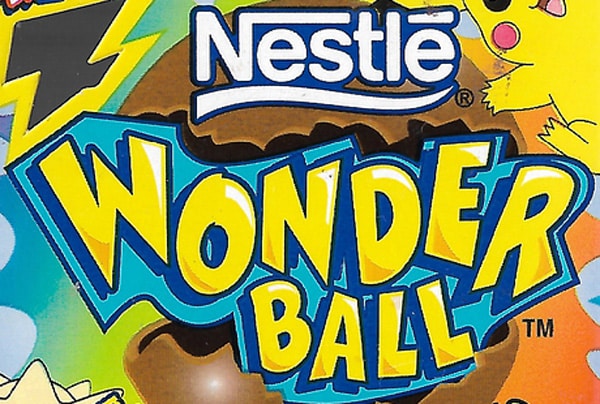
Ingredients
- Milk Chocolate (Sugar, Cocoa Butter, Whole Milk Powder, Cocoa Mass, Emulsifiers [Soy Lecithin & PGPR], Vanilla Extract)
- Dextrose
- Maltodextrin
- Glucose Syrup
- Corn Starch
- Sugar
- Magnesium Stearate
- Malic Acid
- Citric Acid
- Artificial Flavor
- Artificial Colors (Red 40, Yellow 5, Yellow 6, Blue 1)
Nutrition
| Serving Size: | 1 package (28g) | % Daily Value* |
| Amount Per Serving | ||
| Calories | 140 | |
| Total Fat | 6g | 8% |
| Saturated Fat | 5g | 25% |
| Trans Fat | 0g | |
| Cholesterol | 5mg | 2% |
| Sodium | 0mg | 0% |
| Total Carbohydrates | 21g | 8% |
| Dietary Fiber | 0g | 0% |
| Sugars | 18g | |
| Protein | 1g |
- The % Daily Value (DV) tells you how much a nutrient in a serving of food contributes to a daily diet. 2000 calories a day is used for general nutrition advice.
Pictures
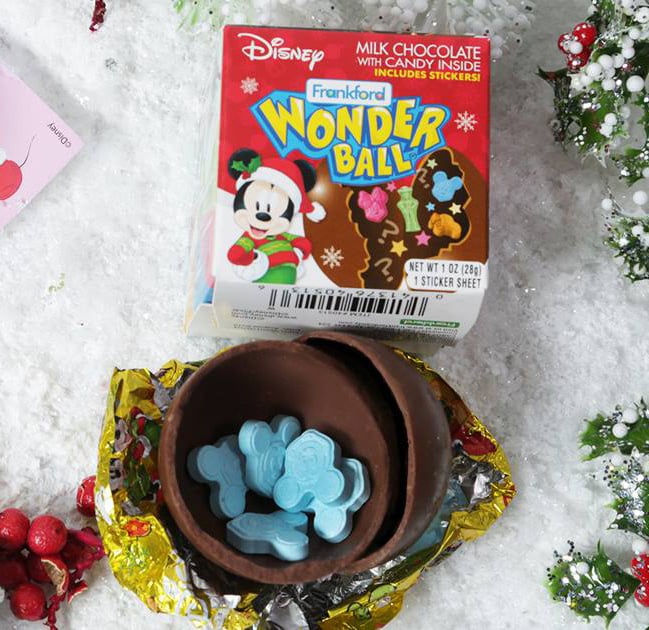
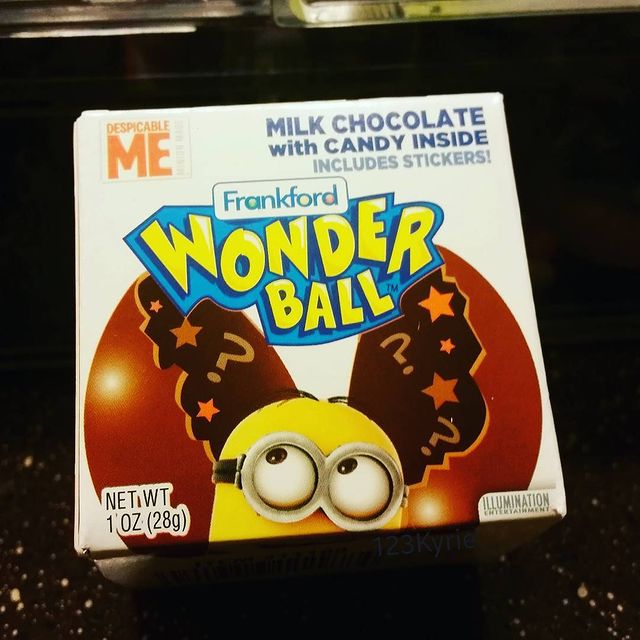
Ads:
There were always fun ad campaigns associated with Wonder Ball Chocolate products. These two ads were some of the most memorable:
A Nestle Wonder Ball ad from the 2000s:
A Disney-themed Wonder Ball Chcocolate commercial:
Jason has been a snack addict since his early years and now enjoys nothing more than reviewing his favourite candys and sweets.
Please leave a review or any memories of this snack in the comments below. Thank you!
Click here for a full A-Z list of Snacks and Candy
